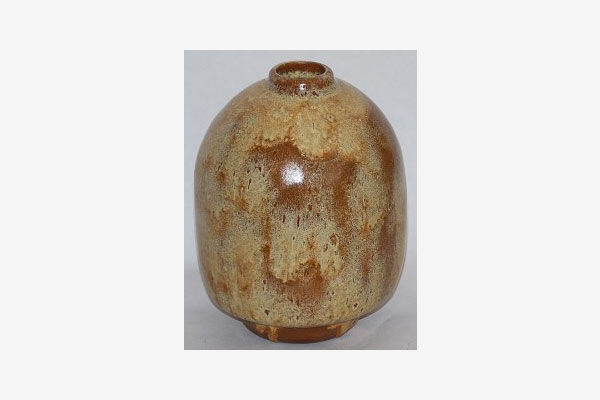Polia Pillin began her studies of ceramics in Chicago, at the Hull House, after she’d established herself as a talented painter years earlier. By the late 1940s, the artist and her husband, also an artist in his own right, set up shop in Los Angeles. It began, as many great things often do, in their garage. Make no mistake – these two were a pair and one simply could not create without the presence and efforts of the other. William was the one who appreciated unexpected finds in glazes while Polia saw what every piece should look like in her mind’s eye. Unlike other potters, whose markings vary over the years, Pillin art pottery pieces are marked with a stylized Pillin signature.
Pillin Pottery may not be as mainstream as its other artistic counterparts, but there is an elegance and sophistication found in this Polish artist’s works. Polia and William Pillin worked as a team from the moment they founded their pottery studio in 1948. While William shaped the various pots, vases and other designs, Polia hand painted each one. It doesn’t  take long to realize her favorite subjects included living things – dancers, birds, fish, horses and other “women of interesting allure”.
take long to realize her favorite subjects included living things – dancers, birds, fish, horses and other “women of interesting allure”.
She was inspired by Picasso. And, much like Picasso, whatever vessel was presented to her by her husband, she allowed that to define what the project would ultimately become. An odd-shaped plate or tile worked nicely as a canvas to paint an upright woman with long flowing hair with a blackbird perched on her knee. A full vase was ideal for a plump fish and the more contemporary vases that were tall and narrow were just right for her to explore shapes, lines and color combinations.
It comes as little surprise then that many experts cite the artistry, more so than the shapes, as most interesting. There’s a subdued mystery that seems to be crafted into these works of art. Part of that could be because these art potters aren’t mainstream and frankly, we don’t know as much about these artists as we do those associated with the Roseville Pottery or Weller Pottery names. Either way, though, there’s no denying the markings and when you come across one, you know you have discovered a jewel. It’s believed much of these Pillin Pottery works remain undiscovered.



Polia &bill were a part of my family’s history. My grandmother would leave the cold chicago winters to hang out in Palm Springs with many of her trade unionist family. I believe polia and bill were part of this circle.i visited her studio in l.a. In the sixties and bought as much as would fit in my suitcase. I donated two pieces to the David andAlfred smart museum in chicago around 1999. They continue to amaze me.
Polia &bill were a part of my family’s history. My grandmother would leave the cold chicago winters to hang out in Palm Springs with many of her trade unionist family. I believe polia and bill were part of this circle.i visited her studio in l.a. In the sixties and bought as much as would fit in my suitcase. I donated two pieces to the David andAlfred smart museum in chicago around 1999. They continue to amaze me.